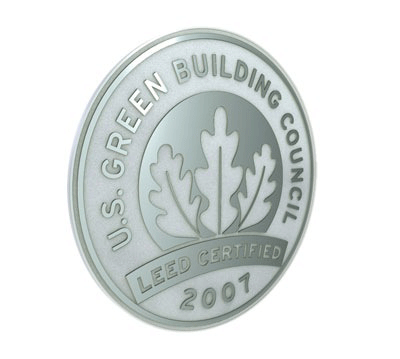
The US Green Building Council’s LEED program is certainly an arbiter of eco-chic, but it’s also criticized for pressuring builders to employ expensive bells and whistles, such as rooftop solar panels, over more effective and cheaper ways of cutting carbon, such as building tall apartments near urban cores. Today, LEED is rolling out a new ratings system that may start to change that. The LEED for Neighborhood Development program will certify entire subdivisions based on how they conform to smart growth principles such as walkability and proximity to transit.
Environmentalists and smart growthers have been hard at work on LEED-ND for more than six years; many have been frustrated that the program has taken so long to go live. Writing on his blog in January, the NRDC’s smart growth czar, Kaid Benfield, complained that USGBC was still worshipping blingy technologies to the exclusion of simpler fixes such as building in a smarter location. “Perhaps this is not surprising,” he wrote, “given the organization’s membership, board, and committees are overwhelmingly populated by representatives of the building industry, their architects, and their consultants.”
Sophie Lambert, the director of LEED-ND, says the delay in debuting the program shouldn’t be surprising. It was designed by a sometimes touchy collaboration between USGBC, the NRDC, and the Congress for New Urbanism. “With three different groups that agree on a lot of things but do disagree on some issues,” she told me yesterday, “there were a lot of philosophical conversations and that kind of thing that definitely added time.”
New Urbanists hope LEED-ND will help preempt opposition to infill development among NIMBYs and local environmentalists who may have a reflexive fear of density (a common problem that I chronicled in Tall is Beautiful, an article in the May/June print magazine). Developers can get certified under LEED-ND before they actually start building, then use the award to help get permits and neighborhood approval.
Still, smart growthers wish LEED would go even further. LEED-ND is still just a voluntary supplement for LEED’s regular set of building standards, which were updated last year to give more weight to urban design but still allow top-ranked “platinum” buildings to be in the suburbs, where driving to and from them probably cancels out most of their energy savings. Earning LEED’s platinum seal should require also getting certified through LEED-ND, Doug Farr, the past chair of LEED-ND, has argued. I asked Lambert why that isn’t happening. “I think USGBC is definitely intrigued by that idea,” she said, “but still needs to figure out if that’s something the marketplace is ready for.”















